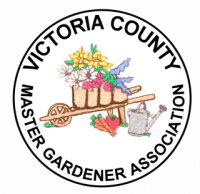February 15, 2013
By Beth Ellis/Victoria County Master Gardener
Edited By
Charla Borchers Leon, Victoria County Master Gardener




Butterflies and hummers are attracted to the open bloom of the pink/purple Morning Glory, which grows well in late spring and summer sun with support from a garden structure.

With blooms of both pastel and bright colors as well as various petal shapes, consider cosmos in your full-sun garden for added color with little to no care required.

It cannot be too hot for the verbena in direct sun with frequent watering in summer conditions. Available in white, pink, purple and red, the more the blooms are cut back, the more they re-bloom for color in the garden.


Contributed photo: www.Flowers.vg
Named for the hour of the day the blooms open, four o'clocks open late in the day in late spring and summer to perfume evening gardens. They remain open during evening hours and are known to attract pollinating moths to the garden.
ABOVE RIGHT:
Contributed photo: www.Flowers.vg
The Moon Flower, a cousin to the Morning Glory, blooms at night with large, fragrant white blooms. Planted together, these two related plants provide blooms with fragrance in the morning, afternoon and night.
My grandmother had magic hands. She could grow just about anything in the warm, rich dirt that surrounded the farmhouse my grandfather built for her way back in the early 1950s. Surrounded by an ancient grove of gnarled oak trees, the house overlooked a creek that could run as gently as a new lamb or as angrily as one of my grandfather's old bulls. Its long, rambling porch, colorful flowerbeds and long flagstone walk beckoned all who saw it to come sit, relax and breathe in the beautiful fragrance of my grandmother's flowers.
Each time I see a patch of bright, old-fashioned flowers or catch the scent of honeysuckle wafting on the breeze, I think of that old house and the sight of my grandmother with trowel in hand, working her way through the rich, red, fragrant earth she loved so much.
Grandmother's favorites
Try some of these old-fashioned selections in upcoming months to invoke special memories.
Cosmos
These bright bloomers have been part of southern gardens for who knows how long. The original yellow and orange flowers that nodded happily in old summer gardens have now been joined by new cultivars with blooms with varying petal shapes and colors ranging from white and pastels to vivid reds and purples.
Once the flowers fade, a spray of seeds appear. These sprays are decorative in their own right and can be left to scatter on their own or be collected by hand for later sowing. Cosmos thrive on sunshine and neglect, so don't overwater or coddle them too much.
Zinnias
The same thing can be said for the zinnia - another sun-loving, old-fashioned favorite. Zinnias are also called "Old Maids" - an appellation that conjures images of well-loved gardens tended by genteel, unmarried ladies of a certain age. Another name is "Cut and Come Again" because the more zinnias are cut for table bouquets, the more flowers they produce. Spade shaped seeds are produced at the base of withered petals; to collect them, just tug the petals out of the flower heads.
Verbenas
Drought-tolerant verbenas were one of my grandmother's favorites. These days they come in a rainbow of colors, ranging from white, pink, purple, and red. Put them where they get plenty of sun, and shear the heck out of them after blooming to encourage re-bloom; otherwise they will start to look scraggly.
Four o'clocks
Named for the hour of the day they open, four o'clocks have been perfuming evening gardens for generations. They are named for their habit of opening in the late afternoons (although cloudy days encourage them to bloom earlier). The colorful yellow, magenta, white or striped flowers remain open during evening hours, enticing pollinating moths with their sweet perfume.
When Thomas Jefferson grew this plant at Monticello, it was called "Marvel of Peru." I've found that they appreciate some shade during the hottest part of the day. The prolific seeds of four o'clocks produce tubers that re-sprout each spring.
Cannas
I love cannas, if for no other reason than because my grandmother used them to hide her compost pile. Tall, old fashioned varieties with red or orange blooms with solid green leaves are still common, with modern cultivars offering a wider range of colors in both bloom and foliage. Viruses have affected much of what is available at nurseries, so right now the best way to get healthy stock is to obtain passalongs from old stands grown by generous neighbors.
Honeysuckle
Of all the plants she grew, honeysuckle reminds me of my grandmother most of all. One whiff of its sweet perfume, and I'm suddenly 8 years old again, playing in the yard of the old farmhouse.
My grandmother loved two kinds of honeysuckle - fragrant Hall's and scentless coral. The non-native Hall's is beloved in the South, but it can be a rampant invader requiring vigilance to prevent unwanted spread. Coral honeysuckle is a Texas native. While its flowers don't have the delicious scent of the yellow and white flowers of Hall's, this is more than made up for by sprays of beautiful orange flowers.
Both kinds do best in sun and will bloom spring through fall in warm areas. New varieties of honeysuckle are now available, but Hall's and coral will forever be my favorites.
Morning Glory and Moon Flower
"Morning Glory" - what a perfect name for a flower! My grandmother grew these sun-lovers on the trellis outside her back door, where their nodding flowers enticed questing butterflies and whirring hummingbirds to zip in for a quick meal. And at nighttime, large night-flying moths took their turn sipping from the huge, white, intensely fragrant blooms of morning glory's cousin - the lovely moon flower. Both varieties produce easily collected seed pods. Plant these two together, so you can enjoy them morning, afternoon, and night.
Growing memories
This is just a tiny selection of the plants my grandmother grew, but I remember these especially well since they were among her favorites. If you haven't already done so, go ahead and give these easy care beauties a try this spring into summer - if for no other reason than they were likely some of your grandmother's favorites, too.
• Felder Rushing
• Passalong Plants. University of North Carolina Press.
• Tough Plants for Southern Gardens. Cool Springs Press. William C. Welch & Greg Grant
• Heirloom Gardening for Southern Gardens: Yesterday's Plants for Today's Gardens. Texas A&M University Press.
• Perennial Garden Color. Taylor Trade Publishing.
SAVE THE DATE!
VCMGA Spring Symposium and Festival
Celebrating 10 years of Victoria Educational Gardens on
Saturday, April 27